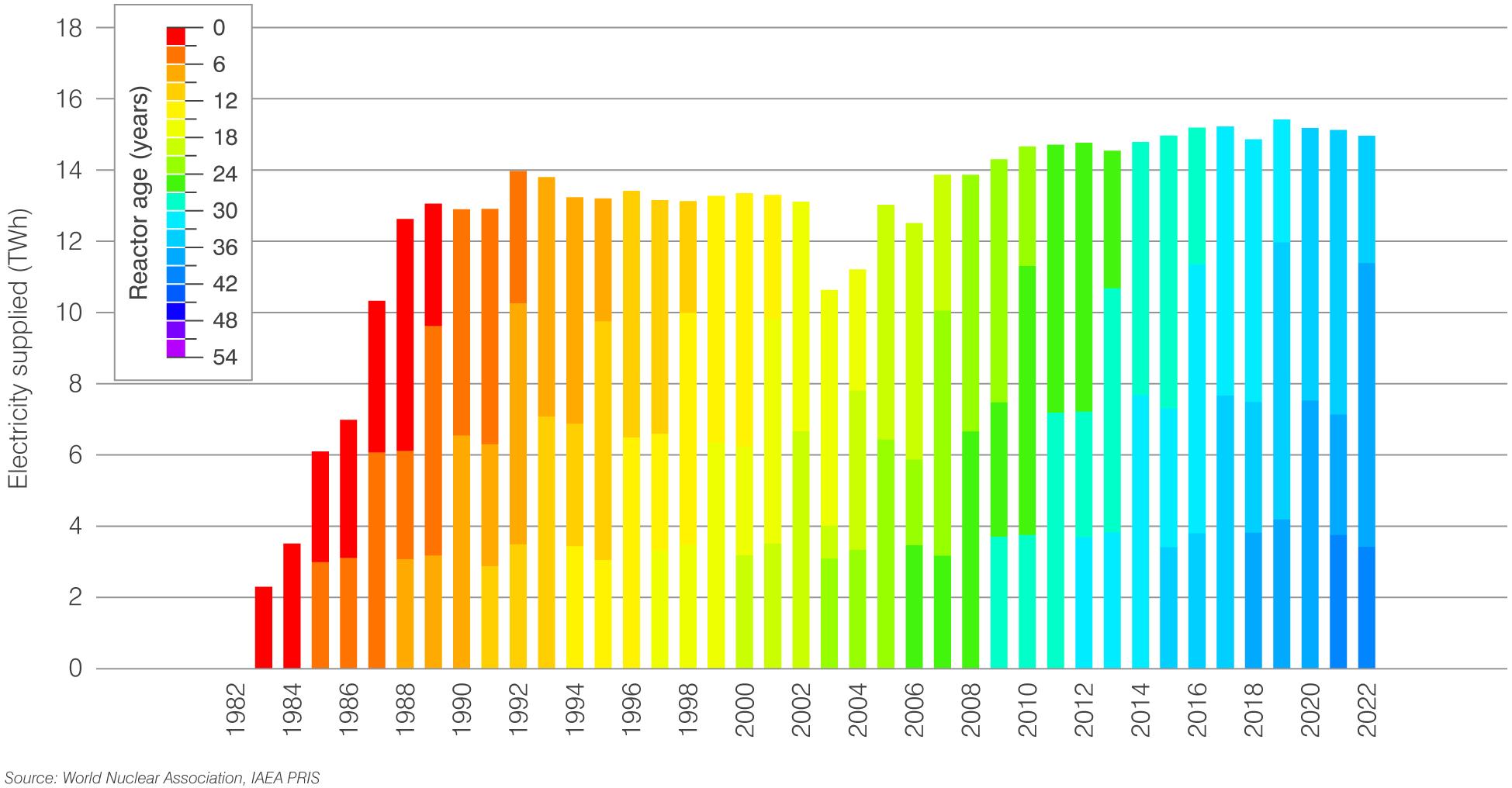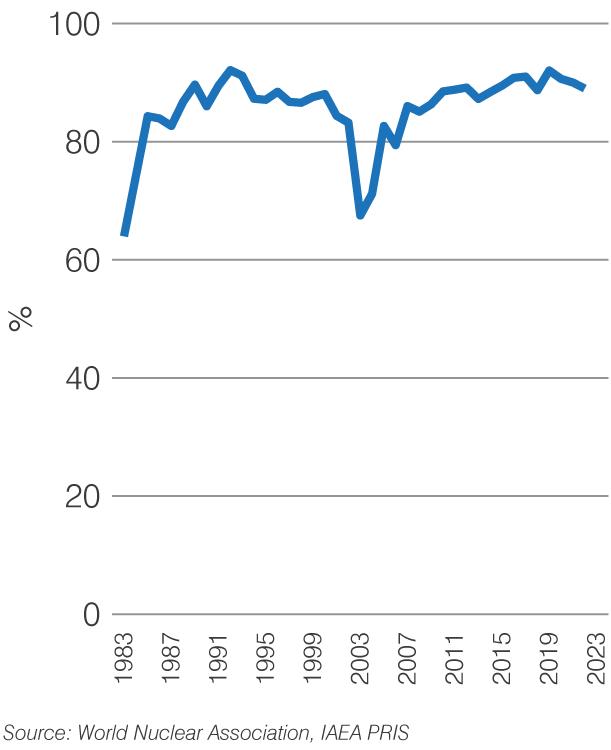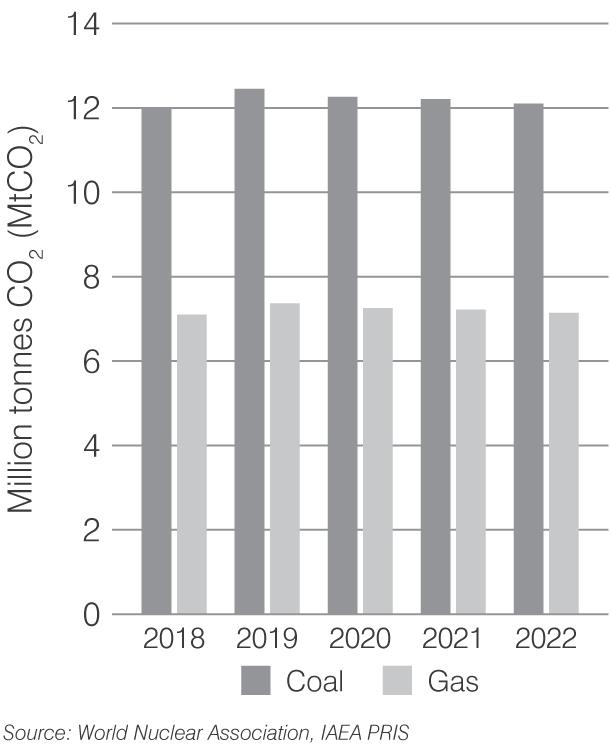Hungary
 As of 31 December 2022
As of 31 December 2022
Four VVER-440 reactors operate at the Paks nuclear power plant, 100 km south of Budapest, with a combined capacity of 1916 MWe. The plant generates around half of the electricity produced in Hungary, but supplies around a third of electricity demand as the country relies heavily on imported electricity.
All four units started up in the 1980s, and would have originally reached the end of their service lifetimes between 2012 and 2017 but received 20-year licence extensions. In December 2022 the Hungarian parliament approved plans to extend the operating lifetime of the four units for an additional 20 years. The legislation received overwhelming support with 170 votes in favour, eight against, and one abstention. This decision allows the state to prepare for operating the Paks plant into the 2050s.
In August 2022 the Hungarian Atomic Energy Authority (HAEA) issued a construction licence for two VVER-1200 units at Paks II, to be built by Rosatom.
In April 2023 the government announced its intention to proceed with the construction of Paks II despite the conflict between Russia and Ukraine and the European Union’s sanctions against Russia. Although details were not made public, it was announced that an amendment to the construction and financing of the Paks II project was agreed with Rosatom. The following month, the European Commission approved the amended contract.
Figure Hu1. Annual electricity output (TWh) and age of reactors (years) at time of generation

Figure Hu2. Average capacity factor of reactors in Hungary

Figure Hu3. Emissions avoidance through use of nuclear generation in Hungary

WNN Links
Hungary expects Paks II by 2032, plans fresh Paks operating extension : World Nuclear News - 9 January 2023
EC outlines approval grounds for Paks II contract amendments : World Nuclear News - 30 May 2023